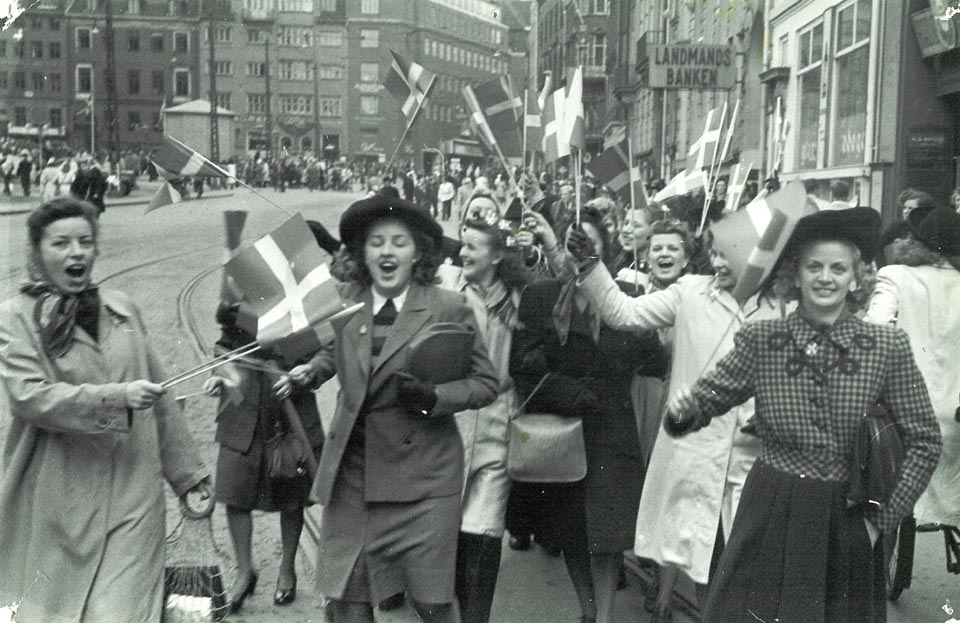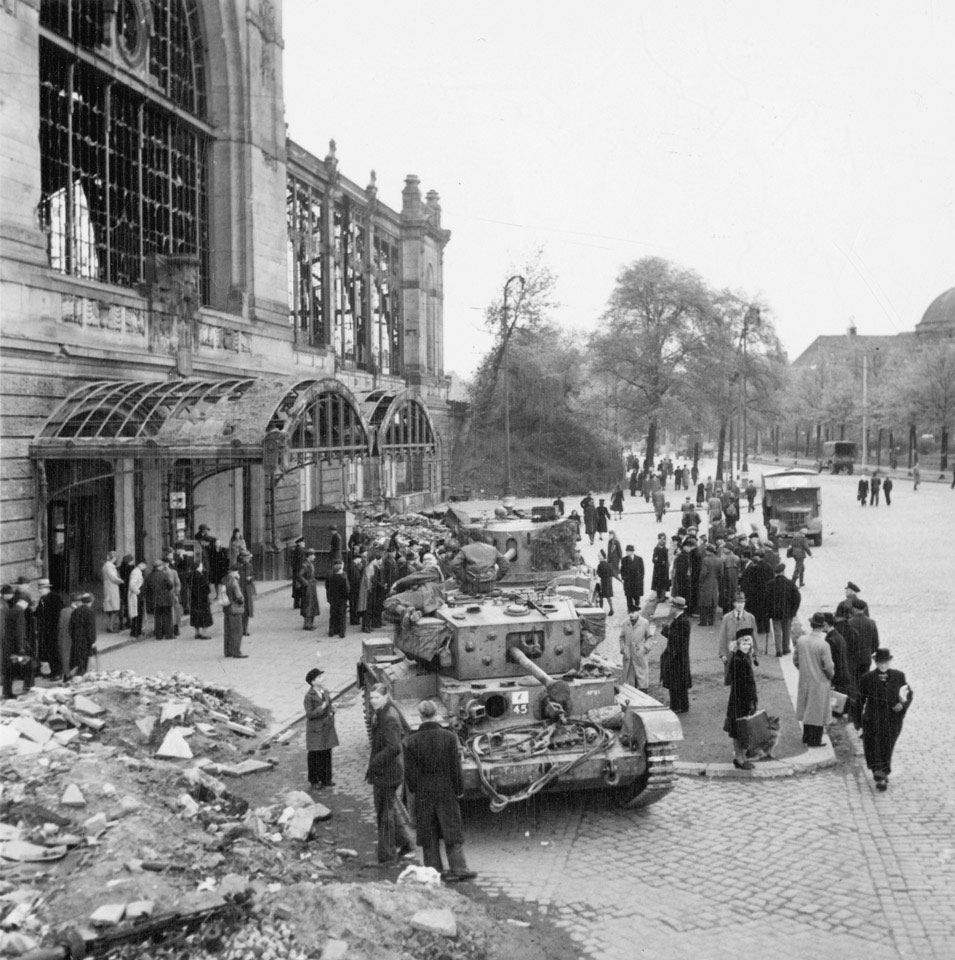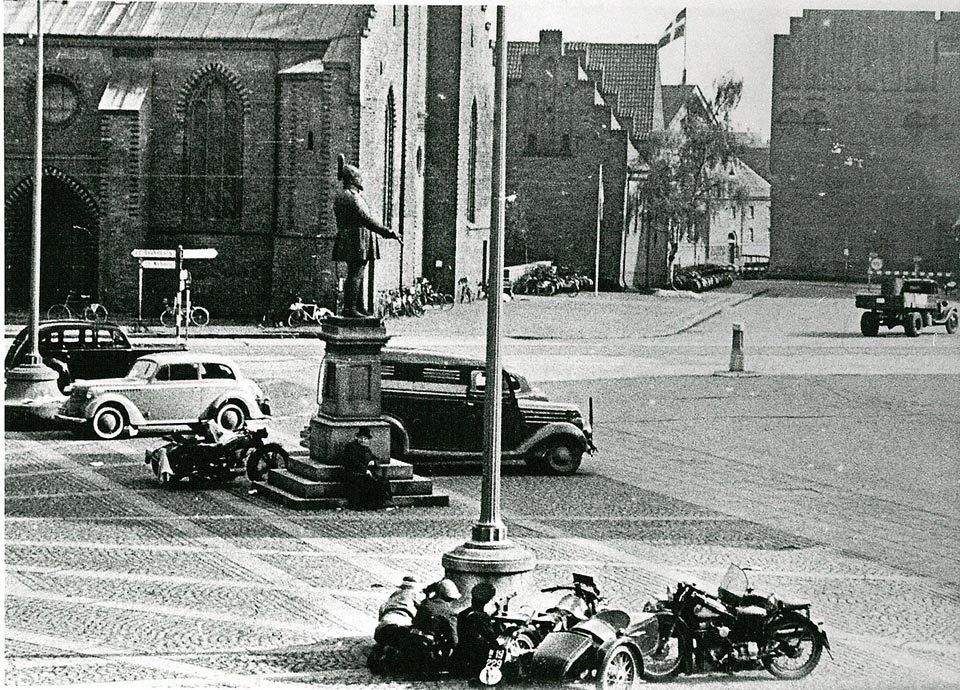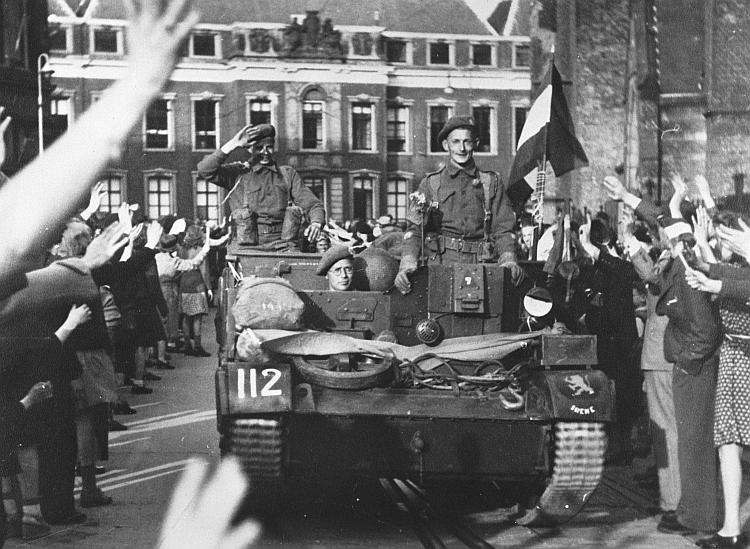Air Operations, CBI
CHINA- 5 341st Medium Bomb Group B-25s attack rail targets of opportunity at Kaifeng.
- 3 B-25s attack a bridge at Singtai, rail traffic around Sinsiang, and various targets of opportunity.
- 76 14th Air Force fighter-bombers, in flights of 2 to 4 aircraft, attack numerous targets across southern and eastern China.
- V Bomber Command B-24s attack oil stores and an airfield near Amoy.
Air Operations, East Indies
- FEAF B-24s attack port facilities at Kuching.
- 42nd Medium Bomb Group B-25s and XIII Fighter Command P-38s support Australian Army ground forces on Tarakan Island.
- P-38s attack the Keningau airfield on Borneo and port facilities at Miri.
Air Operations, Europe
US 9th AIR FORCEETO:
- The 9th Air Force flight operations are limited to 6 recon missions.
GERMANY:
- XXII TAC fighters strafe many Luftwaffe aircraft located on the ground at an airfield near Munich.
- XXII TAC P-47s continue to fly armed-reconnaissance missions over German-occupied regions.
Air Operations, Formosa
- V Bomber Command B-24s attack the Shinchiku airfield.
- 11 B-25s attack alcohol plants at Taito and Shoka.
- V Fighter Command fighter-bombers attack the airfields at Giran and Matsuyama and rail yards at Shoka.
Air Operations, Japan
- 148 58th and 73rd Very Heavy Bomb wing B-29s attack the naval aircraft factory and arsenal at Kure with 578 tons of bombs, and 4 B-29s attack other targets.
- 55 314th Very Heavy Bomb Wing B-29s attack the Chiran, Kanoya, Oita ant Tachiarai airfields, all on Kyushu. 4 B-29s attack other targets.
- 5 B-29s are lost.
- 58th Very Heavy Bomb Wing B-29s mount their first mission, against Kure, since displacing from India to the Tinian.
- During the night, 86 313th Very Heavy Bomb Wing B-29s sow mines in Tokyo Bay, Ise Bay, and the Inland Sea, and 4 B-29s mine other waters.
Air Operations, Philippines
- V Bomber Command A-20s and V Fighter Command fighter-bombers support US 6th Army ground forces on Luzon.
- 1st Marine Aircraft Wing PBJs, SBDs, and F4Us support the US X Corps on Mindanao.
- Rounding out 673 effective sorties in the Ipo River area in three days, several hundred P-38, P-47, and P-51 sorties are flown against a heavily fortified area, 5 miles square, with napalm and high-explosive bombs dropped from altitudes ranging from 50 to 100 feet.
Air Operations, Ryukyus
US Navy, US Marine Corps, and Royal Navy aircraft support US 10th Army ground forces on Okinawa and attack airfields in the Sakishima Islands.
[Baltic Sea
- U-534, a weather-reporting boat, is attacked by Liberator 'G' of No 86 Squadron. Ten depth charges are dropped in two attack runs resulting in the sinking of the U-boat.
- U-579 is sunk in a depth-charge attack by Liberator 'K' of No 547 Squadron.
|
|
- U-2367 sinks following a collision with an unidentified U-boat.
- U-2365 is damaged so severely in an attack by Liberator 'S' of No 224 Squadron that she is scuttled.
- U-2521 is sunk in an air attack by Liberator 'K' of No 547 Squadron.
|
|
| Class | Type XXI |
| CO | Oberleutnant zur See Joachim Methner |
| Location | Baltic, SE of Aarhus |
| Cause | Air attack |
| Casualties | 11 |
| Survivors | 46 |
Battle of the Atlantic
The last U-boat success off America is attained by U-853 which sinks the SS Black Point (5353t), but is in turn sunk by the USS Atherton. 1 of the 5 Armed Guard sailors and 11 of the 41-man crew of the Black Point are killed in the U-boat attack.
[Burma
With the recapture of Rangoon by the 26th Indian Div, the objectives set by Adm Mountbatten may be thought to have been achieved. But thee are still huge Japanese forces to be eliminated in the middle of the country.
[Eastern Front
Adm Dönitz orders German troops to cease all resistance in northwest Germany, Holland and Denmark, following the signature of the surrender of the previous day. But resistance to the Russians continues. There is fierce fighting in Czechoslovakia, near Olmütz, while the Army Group Center carries out a fighting withdrawal southeast of Moravska-Ostrava. There is a rising in Prague. Fighting is also raging near Trieste, Abbazia and Fieume, and in East Prussia on the Frische Nehrung (Baltijskaya Kosa), the strip of shore between Danzig and Königsberg.
At Haar, in Bavaria, representatives of Army Group G under Gen Paul Hausser, 1st and 19th Armies, sign the unconditional surrender demanded by the Allies.
CENTRAL SECTORThe 2nd Shock Army destroys isolated elements of the 3rd Panzer Army at Swinemunde and Peenemunde. German forces in East Prussia and Breslau come under fierce attack while Army Group Center is pressed around Olomouc and southeast of Moravska Ostrava. A limited counterattack by the 17th Army around Wansen is easily repulsed by the 1st Ukrainian Front.
In Prague the revolt gathers pace, Vlassov's Cossack army defecting to the rebels.
[European War Zone
In Prague resistance forces rise against the Germans and a very fierce battle begins with SS units in the city. The Soviets are closing in on Prague from the north and east but are not yet in striking distance. Other Soviet units take Swinemünde and Peenemünde on the Baltic coast. The German Army Group G surrenders to the US forces with the surrender being concluded at Haar in Bavaria.
In Denmark fighting breaks out in Copenhagen but is brought to an end when British units arrive by air in the evening.
[Indian Ocean
Over the next 2 days there are attacks by aircraft from four British escort carriers on Japanese bases between Mergui and Victoria Point in southern Burma and on the 6th the battleships and cruisers of TF 63 shell Port Blair in the Andaman Islands.
[Occupied Czechoslovakia
There is a Resistance attack on the radio station which sparks off a general uprising directed by the Czech National Committee.
[Occupied Denmark
British airborne troops land at Copenhagen after street fighting breaks out between Danish civilians and the Germans.
[Okinawa
The Japanese counteroffensive continues, concentrated on the sector of the American 7th and 77th Divs. Some units manage to penetrate the American lines, recapturing the town of Tanabaru and Tanabaru Ridge. While one regiment of the US 77th Div holds up the enemy, another captures the south side of the Maeda Escarpment and holds it against the Japanese when they counterattack during the night.
Two US ships, the seaplane tender St. George (AV-16) and the surveying ship Pathfinder (AGS-1), are damaged by Japanese suicide aircraft.
British ships bombard the airfields on Sakishima Gunto in the southern Ryukyus.
[Pacific
US aircraft of Fleet Air Wing One flying from Okinawa attack Japanese vessels sailing along the coastline of western Korea. 2 large oilers and 5 cargo ships are sunk, and 14 other ships are left badly damaged.
[Philippines
On Luzon in the US I Corps sector, the 25th Div continues operations for the capture of Balete Pass. In the XI Corps sector there is a pause in the operations against Guagua.
On Negros, units of the American Div succeed in re-forming the supply lines between the west and east of the island.
[United States, Home Front
The War Department announces that about 400,000 men will remain in Germany to form the US occupation force, that 2,000,000 men will be discharged from the armed services and that this will leave 6,000,000 serving in the war against Japan.
A woman and five children are killed by a bomb falling from a Japanese balloon near Lakeview, Oregon. The Japanese have been releasing theese balloons for some time, hoping that they will drift in the wind over the United States before releasing their explosive cargo. This is the only success they will achieve. More than 9,000 of these primitive explosive devices have been launched to drift over America, but even this number, in comparison to the land-mass targeted, makes it a futile exercise and shows the desperate state of the Japanese to make some offensive impact.
[Western Front
All fighting ends in Bavaria with the surrender of the German 1st and 19th Armies. The US 5th Army from Italy links up with the US 7th Army from Germany at the Brenner Pass.
Former French Premiers Daladier, Blum, and Reynaud, Generals Gamelin and Weygand, Reverend Martin Niemöller and former Austrian Chancellor Schuschnigg are liberated in Austria by US troops.
US 3rd Army units occupy Linz in Austria.
[Images from May 5, 1945
|
|
|
|
|
|
|
|







